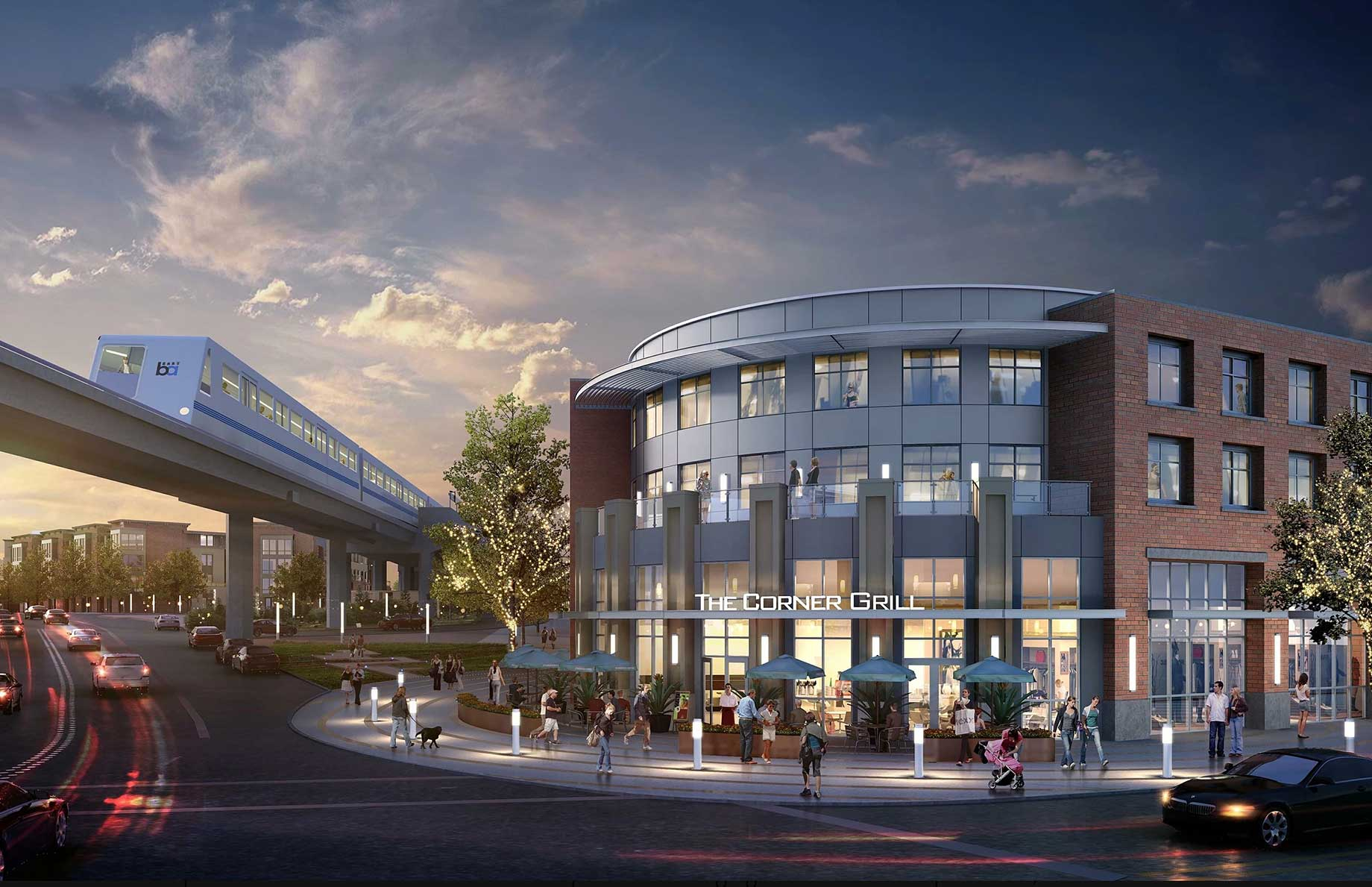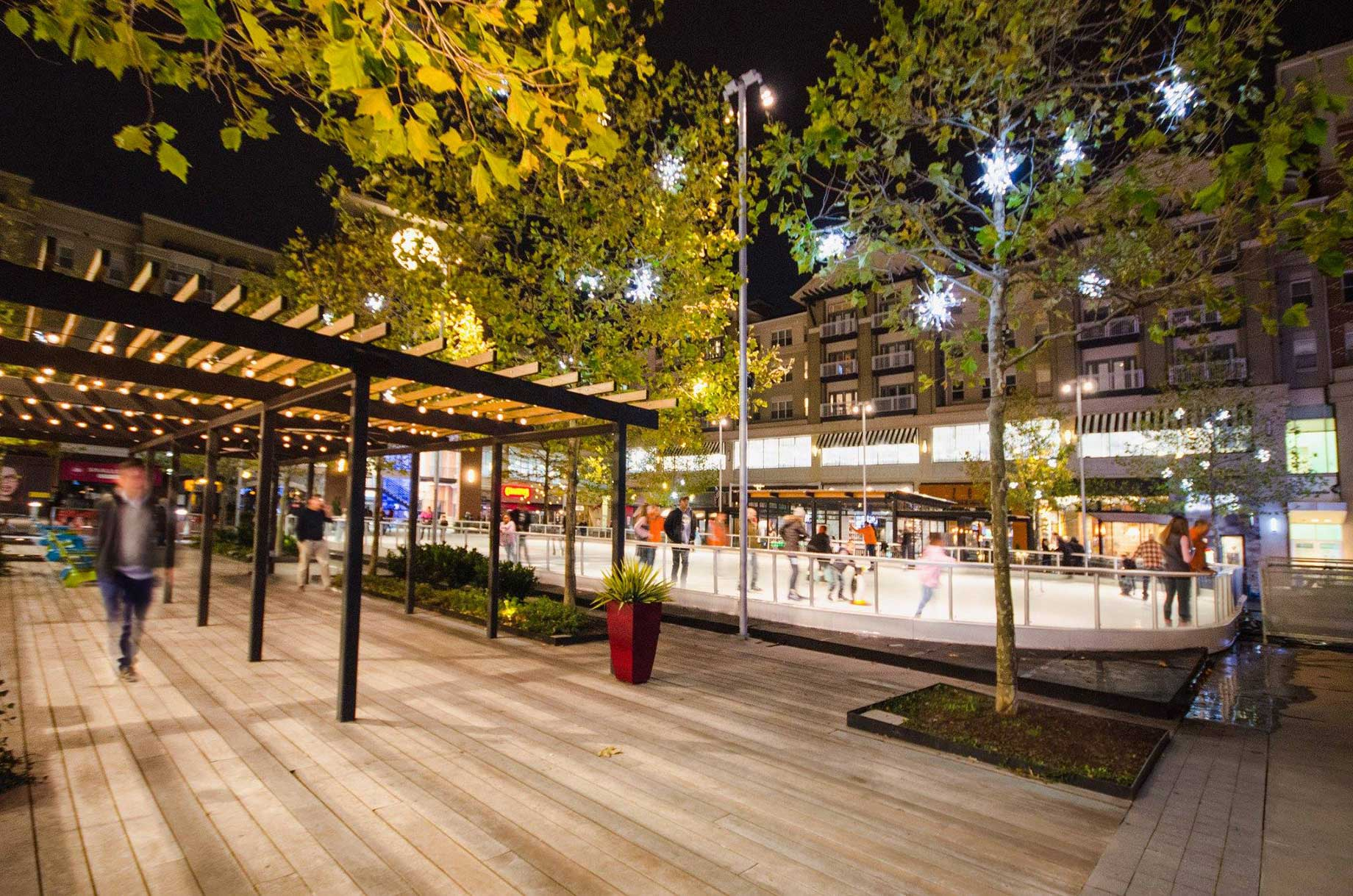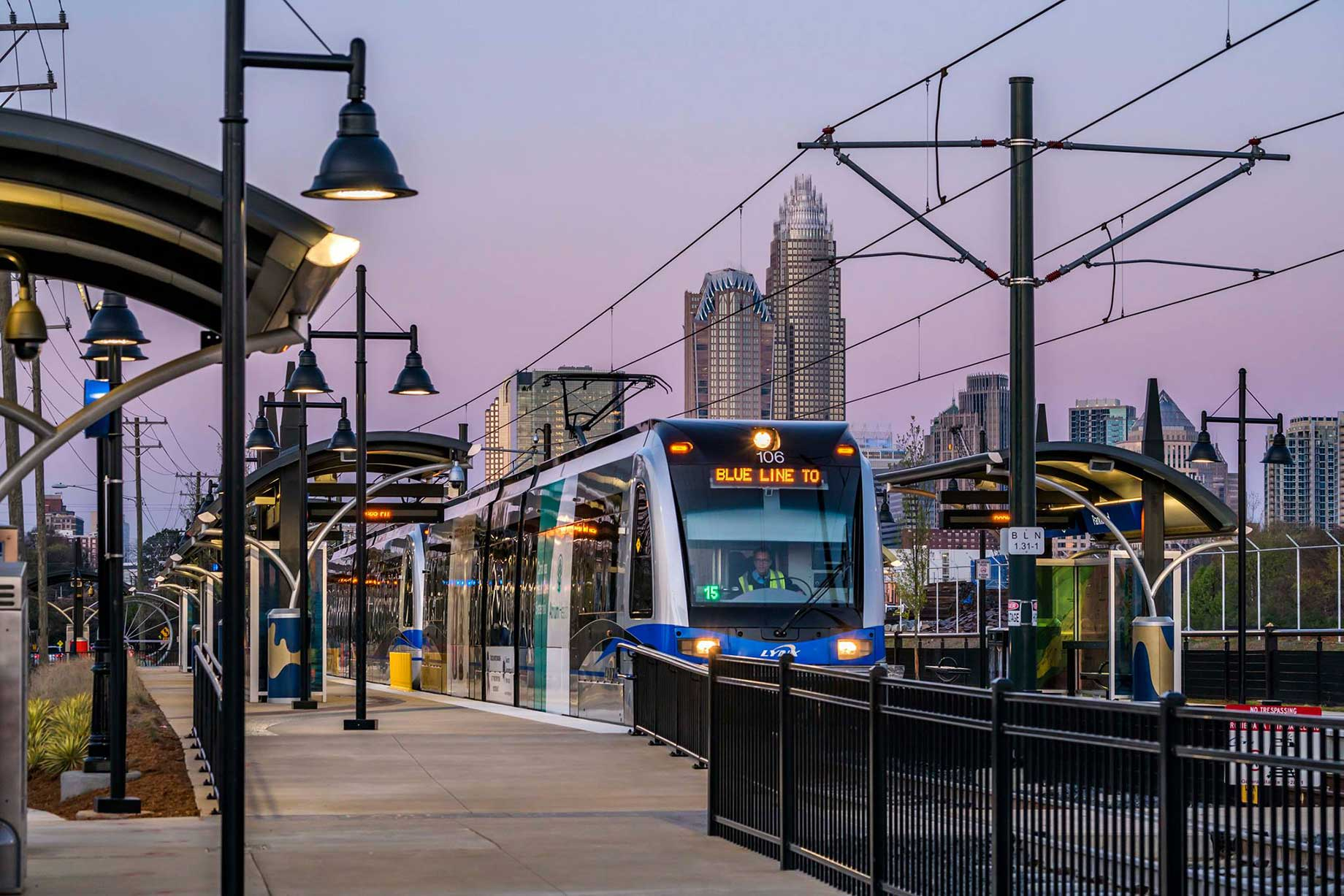Mass-transit development continues to grow across the U.S., and along with it, opportunities for retailers and retail developers. No fewer than 17 public transit projects across the country received federal funding — nearly $300 million in the aggregate — from the U.S. Department of Transportation only last fall.
Atlanta, for one, has become a hotbed for transit-oriented development activity. The Metro Atlanta Rapid Transit Authority launched a series of developments around prominent MARTA stations last year. One of the oldest of these developments, the one surrounding the agency’s Lindbergh Center Station, is undergoing a major redevelopment to help it align with the times, and Atlanta-based Upper East Side LLC has proposed construction of a mixed-use project on nearby Piedmont Road that is to include 18,000 square feet of retail, a 143-room hotel and 208 residential units.
North American Properties is currently developing High Street, an 8 million-square-foot mixed-use community across the road from the Dunwoody MARTA station, in a joint venture with a San Francisco–based developer.
The retailing mix at transit-oriented developments is still heavily dependent on the purveyors of smaller items that are easy for transit riders to carry. That roster includes pharmaceuticals, beauty products, eyewear, cards and small gifts, and prepared foods. “Retailers that sell small takeaway or impulse products will flourish in a TOD,” said Santino DeRose, a partner and managing broker at San Francisco–based Maven Commercial.

Walnut Creek Transit Village, a mixed-use development next to the Walnut Creek BART station, in the San Francisco Bay Area
But the traditional tenant mix, too, is growing and expanding. “Generally, TOD retail is now heavily food-and-beverage-oriented and entertainment-focused, because it is all about human energy, which is what the transit brings literally to the doorstep,” said Mark Toro, managing partner of North American Properties and a longtime MARTA advocate, who has been named to the board of the newly formed Atlanta Transit Link Authority. “The fact that these mixed-use developments are reliant on that human energy to bring value is supplemented by the fact that you have a transit stop nearby.”
There are lessons to be learned from earlier transit-oriented developments, notes Toro. “Lindbergh Center, in Atlanta, is a good example of one of those projects that was not as successful as it might have been, because the demographic in the nearby community at the time it was built could not support the critical mix of retail,” he said. “These developments are about having critical mass, not just about the transit.”
Peachtree Center, developed in the 1970s as one of Atlanta’s first urban mixed-use transit developments, is now in the midst of a $25 million renovation that focuses on a retail component called The Hub. The project includes upgrades to the food-and-beverage offerings, as well as a new lease with entertainment provider Time to Escape, which will begin operating four escape rooms this fall.

Pentagon Row, in Arlington, Va., is one of five transit-oriented developments Federal Realty has developed in the Northeast
Today the Peachtree Center MARTA station boasts the highest ridership in the city, and its retail is moving along with the times. “The retail in this project was much more about boutique shopping back in the 1970s and 1980s,” said Amy Fingerhut, a first vice president in the Atlanta retail services group of CBRE. “Today it is completely changed and the retail direction has gone towards [an] all-food-and-services component, because this is geared toward people coming through every day on transportation, to eat and to work.” The center’s CVS drugstore is among that chain’s highest-grossing units in the Southeast.
Although this activity continues to intensify and local and state governments are keen on encouraging transit-oriented developments, there are challenges. Early last year legislators in California killed a proposed bill that would have allowed construction of apartment buildings standing at least five stories high near every public-transit stop in the state. The bill’s sponsor, state Rep. Scott Wiener, says he plans to reintroduce the legislation this year.
These moves come at a time when the use of public transportation systems is actually declining, according to the American Public Transportation Association. One reason is the rising cost of ridership: Fares on the San Francisco Bay Area’s BART system, for example, rose by 5 percent in January, even as ridership is expected to decline this year, owing primarily to the increased use of ride-sharing services like Uber and Lyft.

The Charlotte Area Transit System started construction last July on the Gateway Station transit hub
Still, the pace of transit-oriented development continues to accelerate. Walnut Creek Transit Village, a mixed-use development next to the Walnut Creek BART station, is to comprise almost 600 apartments, some 25,000 square feet of street-front retail space and a nearly 900-space parking garage, by the time it is completed in early 2020. The project, a joint venture of Blake Griggs Properties and Transit Village Associates, is already proving to be popular: In November, transit users snatched up all the parking spaces offered for monthly permits — within a single day.
Another major transit-oriented development is being built from scratch in Charlotte, N.C. The Charlotte Area Transit System started construction last July on the Gateway Station transit hub, which is to include Amtrak train service, Greyhound and local buses, and, potentially, commuter rail service to Lake Norman. The transit authority seeks a private developer to take on construction of the station itself, as well as retail, apartments and offices on land surrounding the hub.
“We obviously want retail, and we want a great public realm, but we are not going overboard on the specifics, so we are really letting the development community and the market come to us about what they would envision,” said Tracy Dodson, head of economic development for the city of Charlotte. Citing her own experience with other transit corridors in Charlotte, Dodson says she sees trends crystalizing with connection to future retail development. “We have moved into what I call the next evolution of retail, and it is more about what is hot right now: the experiential retail,” Dodson said. “We have been able to capture grocery stores and things like that, but we have got groups of retail developers who now look at our transit corridors with a bigger plan.”
Developers and retailers alike agree that successful transit-oriented developments draw upon the synergy of both the transit population and the local live-work-play community. “Bottom line is, it has to be a good retail location in general,” said Bradley N. Blake, co-founder and managing partner of Blake Griggs Properties, “and cannot be entirely dependent on the transit users.”
By Ben Johnson
Contributor, Commerce + Communities Today


